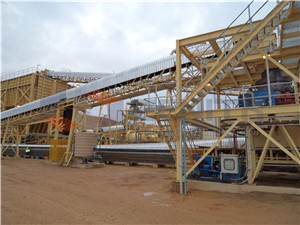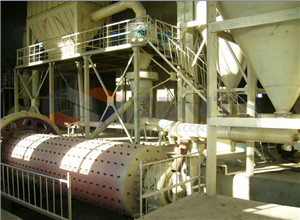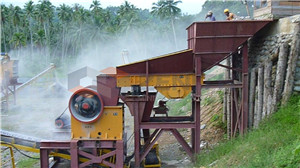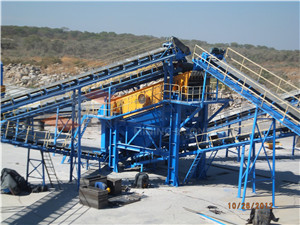
 Products Center
Products Center
 Stone Crusher
Stone Crusher
 Grinding Mill
Grinding Mill
 Optional Equipment
Optional Equipment
 Mobile Crusher
Mobile Crusher
 Knowledge Hall
Knowledge Hall
 Crushers FAQ
Crushers FAQ
 Grinding Mills FAQ
Grinding Mills FAQ
 Mining Equipments
Mining Equipments
 Solution
Solution
 Stone Crushing
Stone Crushing
 Sand Making
Sand Making
 Ore Processing
Ore Processing
 Grinding Plant
Grinding Plant
 Construction Building Material
Construction Building Material
process antimony ore

Antimony - Wikipedia, the free encyclopedia
Antimony is a chemical element with symbol Sb (from Latin: stibium) and atomic number 51. A lustrous gray metalloid, it is found in nature mainly as the sulfide ...

Antimony Oxide Listing Background Document for the ...
ANTIMONY OXIDE LISTING BACKGROUND DOCUMENT FOR THE INORGANIC CHEMICAL LISTING DETERMINATION This Document Contains No Confidential …

Antimony xide - Wikipedia, the free …
Antimony xide is the inorganic compound with the formula Sb 2 O 3. It is the most important commercial compound of antimony. It is found in nature as the minerals ...

Antimony - Florida-Spectrum Environmental …
Chemical Abstract Number (CAS #) 7440-36-0: Synonyms: ANTIMONY-BLACK; ANTIMONY,-REGULUS; ANTYMON- (POLISH); CI-77050; REGULUS-OF-ANTIMONY; …

Antimony Mining - CommodityMine - InfoMine
InfoMine: Antimony Mining Information - comprehensive and current data on Antimony prices, Antimony exploration, Antimony mines and Antimony markets.

Toxic Substances Portal - Antimony - ATSDR - …
2011-3-3 · What is antimony? Antimony is a silvery-white metal that is found in the earth's crust. Antimony ores are mined and ...

Antimony | Minerals Education Coalition
Description: Antimony: A native element, antimony metal is extracted from stibnite and other minerals. Antimony is used as a hardening alloy for lead, especially ...

Antimony Compounds | Technology Transfer …
Hazard Summary-Created in April 1992; Revised in January 2000. Everyone is exposed to low levels of antimony in the environment. Acute (short-term) exposure to ...
epa.gov › EPA Home2013-10-18Chemie der Erde - Massachusetts Institute of Technology
8 C.G. Anderson / Chemie der Erde 72 (2012) S4, 3–8 Table 6 Analysis of typical impure antimony production products. Impure Sb from reduction smelting

INDUSTRIAL ACIDS - Hydrazine Nitrate, Glycolic …
Manufacturer and Supplier of INDUSTRIAL ACIDS, Hydrazine Nitrate, Trichloroethylene, Glycolic Acid, Calcite and Hydroxyethyl Cellulose offered by Ashi Inc (A Unit Of ...

Metallurgy | Chemistry@TutorVista
The process of metallurgy is one of the oldest branches of science; it can be traced back to 6000 BC. In the 17th century, only 12 elements were known and this number ...

antimony: Definition from Answers - Answers …
antimony n. ( Symbol Sb ) A metallic element having four allotropic forms, the most common of which is a hard, extremely brittle, lustrous, silver-white,

TOXICOLOGICAL PROFILE FOR ANTIMONY AND …
TOXICOLOGICAL PROFILE FOR ANTIMONY AND COMPOUNDS. Agency for Toxic Substances and Disease Registry. U.S. Public Health Service September 1992

The Leachox™ Refractory Gold Process – The Testing ...
1 The Leachox™ Refractory Gold Process – The Testing, Design, Installation and Commissioning of a Large Scale Plant at the VASGOLD Gold Mine, Kazakhstan

Processing Copper Ore - Tenova
TENOVA is a worldwide supplier of advanced technologies, products and engineering services for the iron & steel and mining industries. Processing Copper Ore

Products - Oxford Instruments
Oxford Instruments aims to pursue responsible development and deeper understanding of the world through Science & Technology. As one of the first commercial spin-out ...

Tin Antimony Solder | Indium Corporation Blogs
INDIUM:Tin Antimony Solder ... Folks, Many people responded to my recent post, In Search of Tin Whisker Fails in Lead-Free Soldering.

Antimony - Element information, properties and …
Antimony is widely used in alloys, especially with lead in order to improve its hardness and mechanical strength, and in this form is used in batteries.

Iron Ore benefication Plants - Iron Ore …
Iron Ore benefication Plants: Star Trace offers turnkey solutions for iron ore benefication plants. We are one of the leading project suppliers for chromite ore ...

Geological ore deposits - Australian Museum
The main types of geological ore deposits of importance can be divided into: metallic deposits; non-metallic deposits; fossil fuel deposits; Finding ore deposits

Metallurgy | Chemistry@TutorVista
The process of metallurgy is one of the oldest branches of science; it can be traced back to 6000 BC. In the 17th century, only 12 elements were known and this number ...

antimony: Definition from Answers - Answers …
antimony n. ( Symbol Sb ) A metallic element having four allotropic forms, the most common of which is a hard, extremely brittle, lustrous, silver-white,

TOXICOLOGICAL PROFILE FOR ANTIMONY AND …
TOXICOLOGICAL PROFILE FOR ANTIMONY AND COMPOUNDS. Agency for Toxic Substances and Disease Registry. U.S. Public Health Service September 1992

The Leachox™ Refractory Gold Process – The Testing ...
1 The Leachox™ Refractory Gold Process – The Testing, Design, Installation and Commissioning of a Large Scale Plant at the VASGOLD Gold Mine, Kazakhstan

Processing Copper Ore - Tenova
TENOVA is a worldwide supplier of advanced technologies, products and engineering services for the iron & steel and mining industries. Processing Copper Ore

Products - Oxford Instruments
Oxford Instruments aims to pursue responsible development and deeper understanding of the world through Science & Technology. As one of the first commercial spin-out ...

Tin Antimony Solder | Indium Corporation Blogs
INDIUM:Tin Antimony Solder ... Folks, Many people responded to my recent post, In Search of Tin Whisker Fails in Lead-Free Soldering.

Antimony - Element information, properties and …
Antimony is widely used in alloys, especially with lead in order to improve its hardness and mechanical strength, and in this form is used in batteries.

Iron Ore benefication Plants - Iron Ore …
Iron Ore benefication Plants: Star Trace offers turnkey solutions for iron ore benefication plants. We are one of the leading project suppliers for chromite ore ...

Geological ore deposits - Australian Museum
The main types of geological ore deposits of importance can be divided into: metallic deposits; non-metallic deposits; fossil fuel deposits; Finding ore deposits
- Last Product: drilling blasting process
- Next Product: bibliography on grinding process
RD Equipments
- coper processing machine
- processing of coarse aggregate
- slag processing unit
- heavy machinery process flow diagram
- recycled marble process
- cement production plant wise april 11 to march 12 in india
- gypsum productionmachines for sale c
- midland quarry products ltd
- limonite processing
- cement production in lebanon